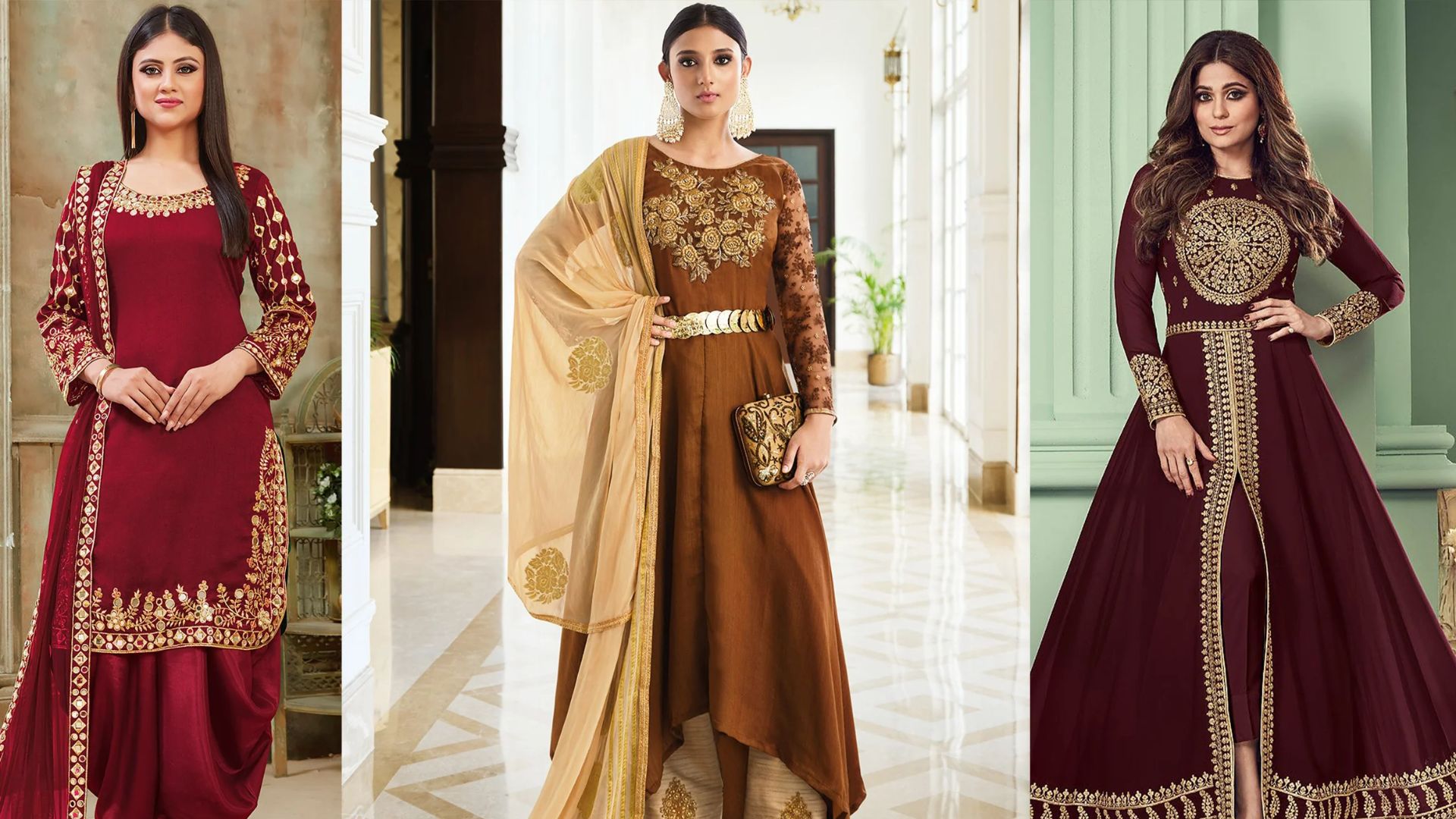
Elegance Redefined: The Salwar Suit Designs You Need to Know About
Indian fashion has been a saga of consistent evolution; its pages are incomplete without the mention of the salwar suit. This particular attire symbolized the traditional attributes and became an instantly recognizable part of the Indian culture.
These suits make for a great outfit and have made their mark in contemporary times as well. With the immense variety in designs, fabrics, and styles, salwar kameez is an all-time fashion wear for women all across India and other corners of the globe. In today’s article, we will explore the various types of salwar suits along with a couple of types of salwars, a few types of kameezes, and types of fabrics that define such an unassuming attire.
Understanding the Components of a Salwar Suit
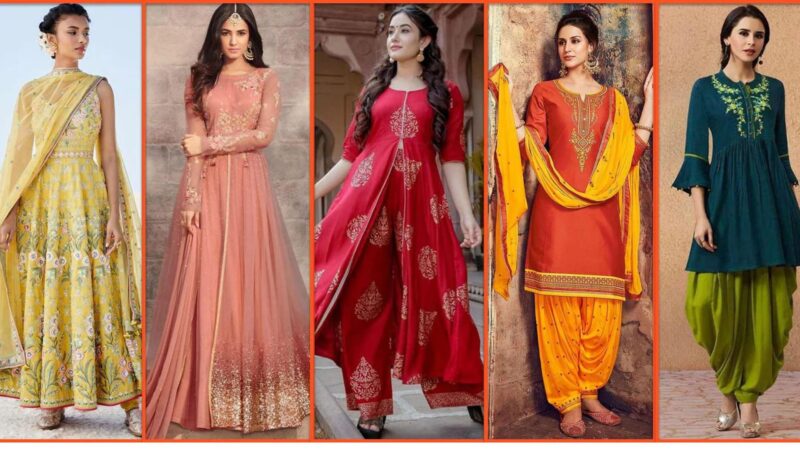
Before discussing the types of salwar suits, let’s discuss their three chief constituents:
- Kameez: The upper garment, which has varied lengths, styles, and cuts. It is usually the highlight of the outfit, known for its especially intricate embroidery work and may have sequins, but it may even be made with prints, highlighting simple yet modern prints.
- Salwar: The lower garment, which is traditionally loose, though, in the present day, it is available in many styles, including tight-fitting churidars and loose, flowing ones with flair bottoms, called palazzos.
- Dupatta: A long piece of cloth, which falls from the shoulder to the legs, and is used in conjunction with the kameez and salwar to add grace and modesty to the dress.
Various Kinds of Salwars
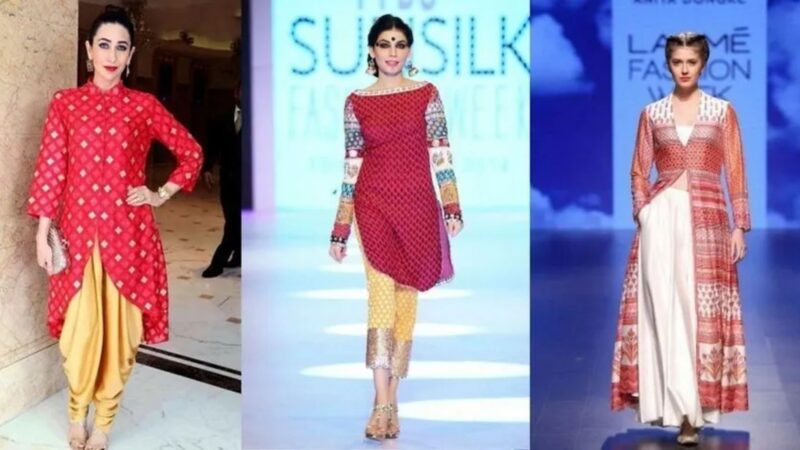
The salwar style has a lot to do with the look of the overall suit. Following are some common types of them:
- Churidar: A salwar that is fitted tight on the body, which narrows down further to the ankles, forming bunched-up folds, thereby called “churis.” It forms a sleek outfit and is usually worn with long kameezes.
- Patiala- Originating from Punjab, a Patiala salwar contains a lot of fabric and lots of pleats that give a flared and billowy silhouette. It is very comfortable and usually worn with a short kameez.
- Palazzo- These are wide-legged pants and a fashionable style of salwar. It is loose and comfortable to wear in the summer. This is also versatile and can be worn with long and short kameezes.
- Dhoti-Style: This kind of salwar is draped and pleated like the Indian dhoti. It gives a very relaxed appearance while looking trendy and therefore must be the latest craze in Indo-Western fashion.
- Harem Pants: It resembles the palazzo, only it happens to be more fitted on the ankle than the other styles. The pants are loose flowy garments and hence give a bohemian touch. It is paired with short, fitted kameezes or even kurtas.
- Afghani: A free-bottomed salwar with a tapering ankle, the Afghani salwar provides comfort with a slight touch of tradition. It is usually accompanied by long, trailing kameezes.
- Sharara: A wide-flared pant, broad at the bottom, which resembles a skirt, the Sharara comes lavishly decorated and is styled with a short or medium-length kameez. This dress has earned widespread preference at weddings and festive celebrations.
Different Types of Kameez
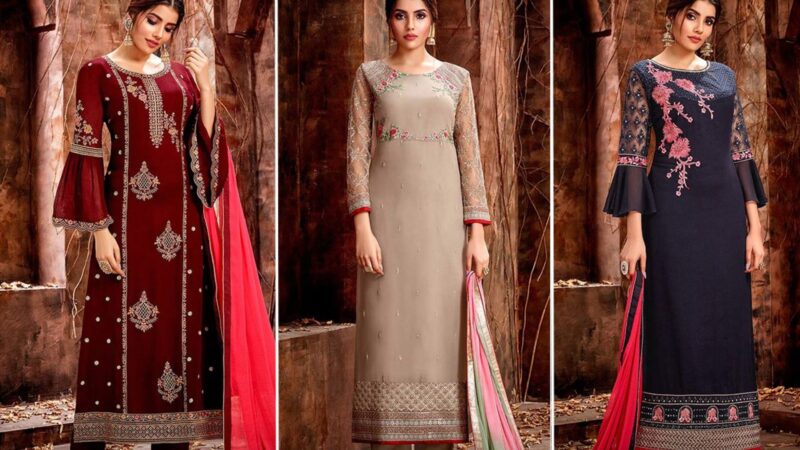
The kameez is the heart of the salwar suit and can be styled in a variety of ways to lend a unique charm to the outfit. Such varieties include:
- Anarkali: The kameez is styled after the legendary courtesan Anarkali and can be distinguished by the long, flowing silhouette that flares out from the waist. Anarkali’s are often heavily embroidered and are perfect for formal occasions.
- Straight-cut: This is a very simple, classic design where the kameez runs from the shoulder parallel up to the hem. It is versatile and can be donned for both casual and formal wear depending on the material and embellishments.
- Frock-Style: It is short in length, flared, and a very young style for the kameez. It is just right for casual wear, and normally, it’s worn with leggings or churidars.
- Angrakha: It’s a traditional style in which a frock will have an overlapped front panel that gets tied on the side. An angrakha kameez would portray that the attire is of royalty due to much intricate embroidery work done on it, such attires are worn on festive occasions.
- Asymmetric: With an uneven hemline, it can add an oomph of modernity to the dress. Really, as a fashionable choice, it would be a great voice those days.
- Jacket-Style: This kameez has a matching or contrasting jacket, which gives the entire suit a very formal touch. It can be worn at winter weddings or for any other formal occasion.
Different Fabrics Used in Making a Suit
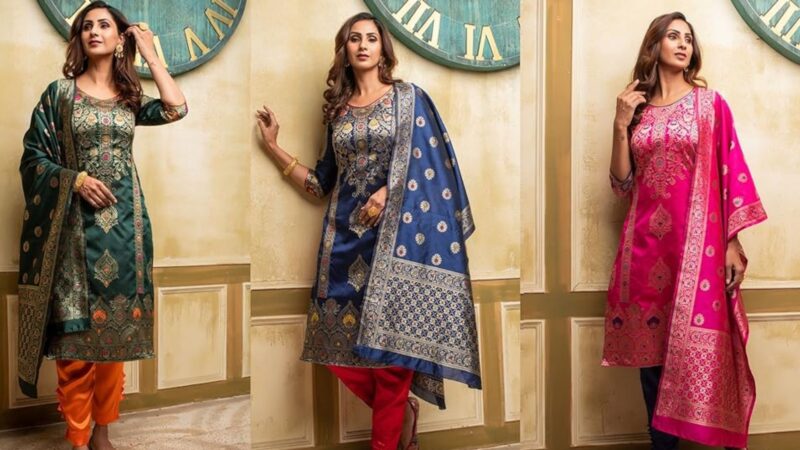
- Cotton: With cotton being a light and breathable fabric, it is most suited for everyday wear. Cotton salwar suits are comfortable and come in different body-loving prints and patterns that may tickle your fancy.
- Silk: The epitome of luxuriousness and smooth mantles—all those things make silk perfect to try on during formal hails. Generally, you will find intricate embroidery, zari work, and sequins in silk salwar suits.
- Georgette: A lightweight, flowy cloth best suited for party-wear salwar suits. It falls well and most times embellished by sequins or embroidery.
- Chiffon: To the touch, it is similar in texture to georgette but a lot lighter. A very delicate, transparent material gives grace and splendour to any outfit as it is, therefore, most often the choice for evening events. Chiffon salwar suits.
- Velvet: Luxurious and plush, velvet is the fabric of choice for winter weddings. The velvet salwar suits are warm and have a feeling of luxury, and usually, they are worked upon with heavy embroidery or embellishments.
- Crepe: somewhat crinkled, crepe is a soft fabric and comfortable. Ideal for casual wear and semi-formal and is used for straight-cut or asymmetrical kameezs.
Trendiest Salwar Suit Design Trends
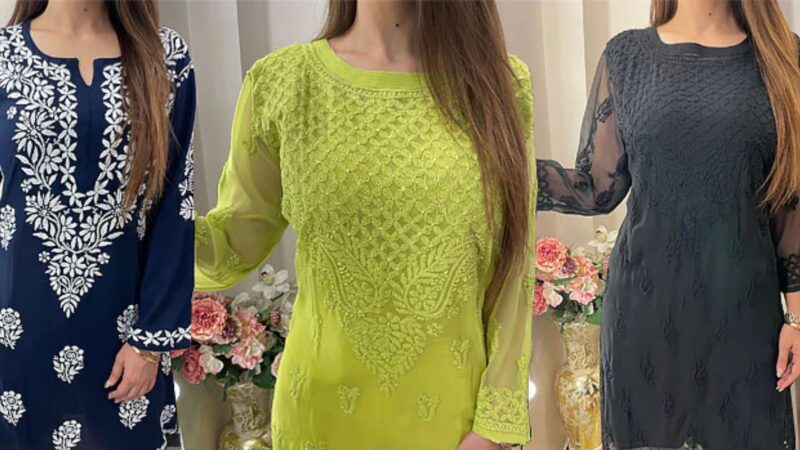
Fashion never stops evolving, and salwar suits are not behind. Now, let’s go in for some of the most recent trends in salwar suit designs:
- Cape style Salwar Suit Designs: Made for the ones who want drama with elegance, this style of cape over a salwar suit gives something unconventional yet with a modern twist to flaunt on an evening occasion.
- Lehenga-Style Salwar Suits: It’s a style that blends a lehenga and a salwar suit. It has a flared bottom like a lehenga with a kameez and is hence a pick for weddings and festive occasions.
- High-Low Salwar Suits: These salwar suits come with an asymmetrical hemline—a style where the front is shorter in length, whereas the back is longer. It is a style that is most in fashion these days and is perfect for parties.
- Embellished Salwar Suits: Heavy rich sequins and stonework salwar suits. Just the best for weddings and other formal functions where you are supposed to be at your stylish best. They glitter with panache.
- Pastel Colored Salwar Suits: Soft pink, mint green and lavender hues are some hot favourites presently in the fashion world. Pastel-coloured salwar suits are ideal for daytime functions and give a very soft, feminine feel.
- Printed Salwar Suits: Right from florals to geometric patterns, printed salwar suits are the flavour of the season. They are extremely versatile and can be dressed up as well as down to suit the occasion.
Types of Lady’s Suit Fabrics
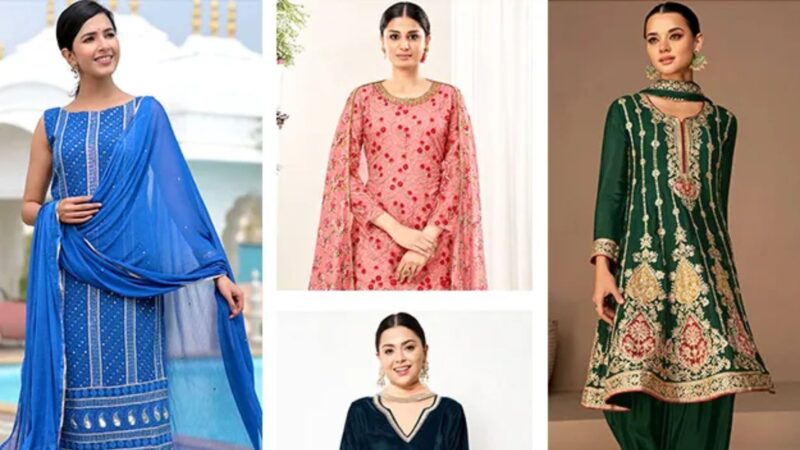
The fabric of a salwar suit plays a very important role in its comfort, drape, and final look. Here are some popular ones:
- Cotton: As already mentioned, cotton is best for the heat of summer and daily wear. It is extremely soft and airy with a thousand varieties of prints and designs.
- Silk: Even the name of silk is associated with luxury, be that Banarasi silk, Tussar silk, or raw silk, best reserved for any festive occasion. Wearing silk adds a brilliant touch of richness and grandeur.
- Linen: With its cooling properties, linen can be very well used as a summer collection. Linen salwar suits are comfortable and exude a casual yet elegant vibe.
- Organza: Sheer and lightweight, organza is often used for dupattas or as an overlay on kameezes. It instantly adds a touch of sophistication and is perfect for formal occasions.
- Net: Net can be incorporated in the dupatta or as an overlay. It gives the salwar suit an ethereal and feminine look. It can either be fully sequined or embroidered.
- Velvet: A sure shot for winters, velvet salwar suits are rich and warm. These salwar suits are usually heavily embroidered and are best for wedding ceremonies and grand functions.
Styling Tips for Salwar Suits
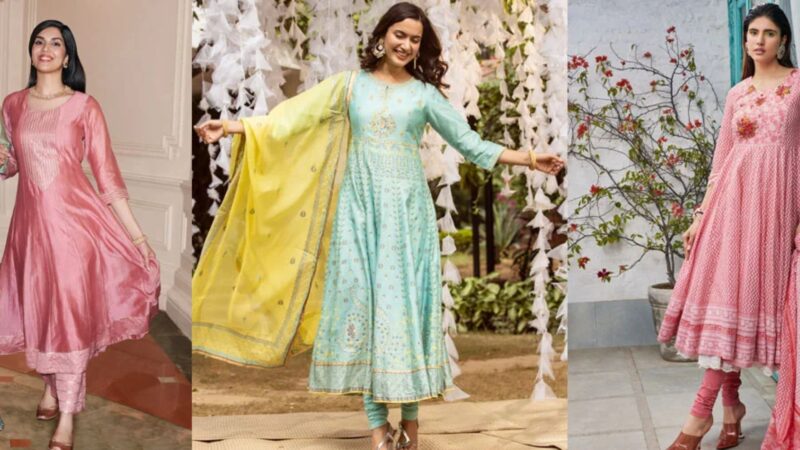
Now that you have a brief on the various types of salwar suits, some style tips will add to perfection in your appearance:
- Accessorize Wisely: The right accessories are a must to lift any look. You can team up your salwar suit with statement earrings, bangles, and a clutch. If your outfit is too heavy, prefer minimal jewellery.
- Consider the Occasion: Choose your fabric, design, and embellishments based on the event. For weddings, silk and velvet will do best, and for casual outings, cotton and linen are perfect.
- Experiment with Colors: Try to mix and match different hues. Pastels do very well in the daytime while darks suit an evening function.
- Pay Close Attention To Fit: A properly fitted Salwar Kameez will work to make you appear more visually appealing in your current silhouette. Make sure the kameez fits well at the shoulder and bust. Also, ensure that the salwar is not very tight or very flowing.
A salwar suit is essential when it comes to Indian fashion. Salwar suits, perfect for that blend of tradition and modernity, offer. In its endless variety of styles, designs, fabrics, and types, there is a salwar suit for each woman and every occasion. Be it the classic churidar kameez or the trendy palazzo suit, find what makes you feel confident and comfortable. So wear this timeless attire in your very own style!



